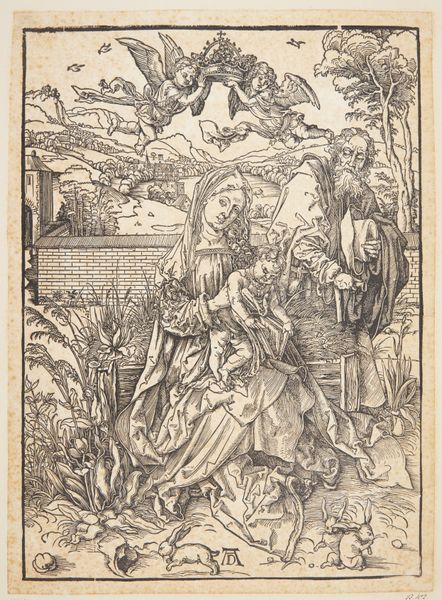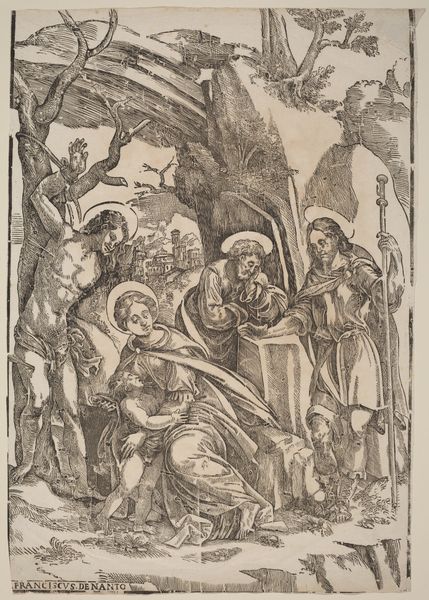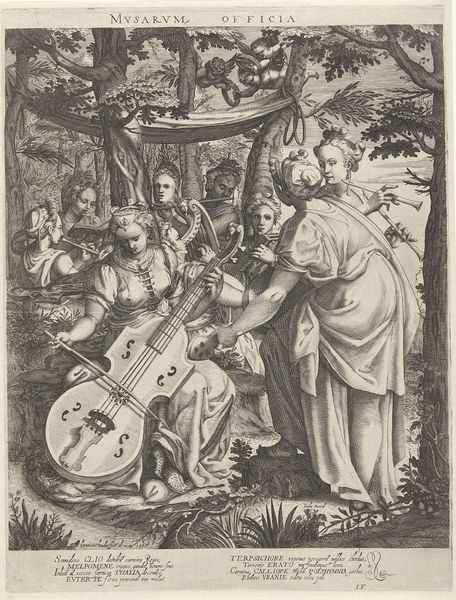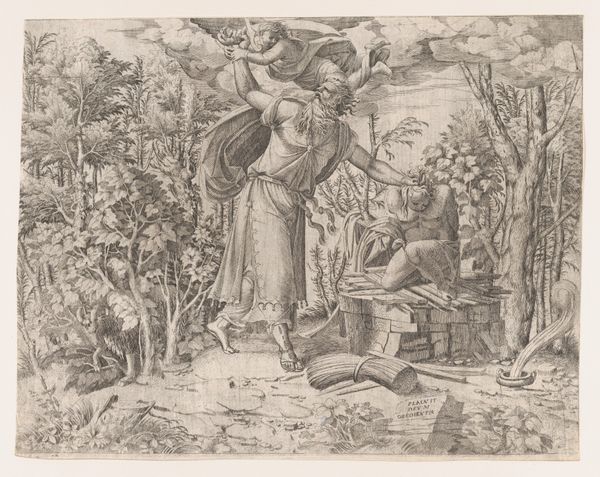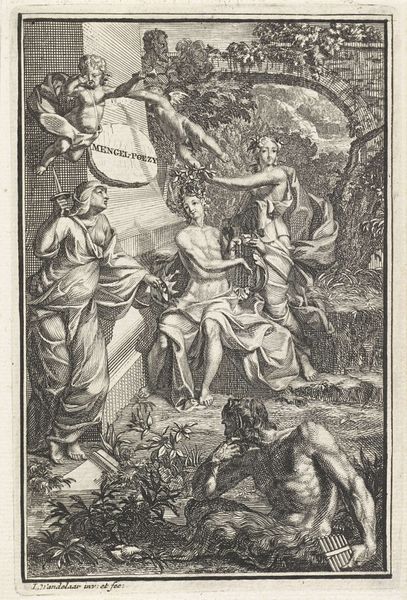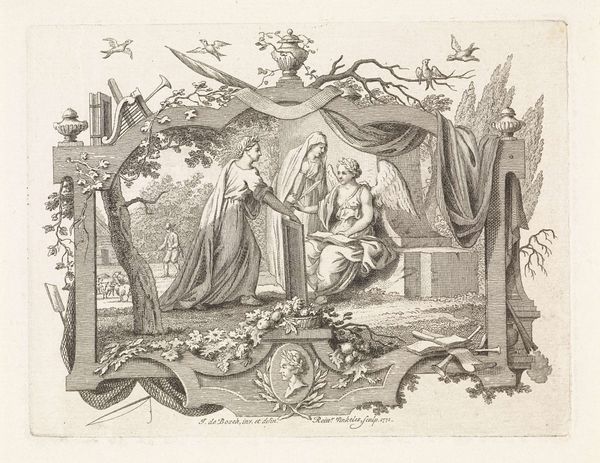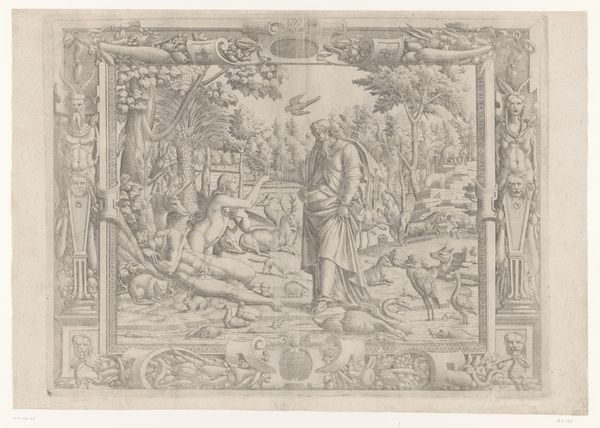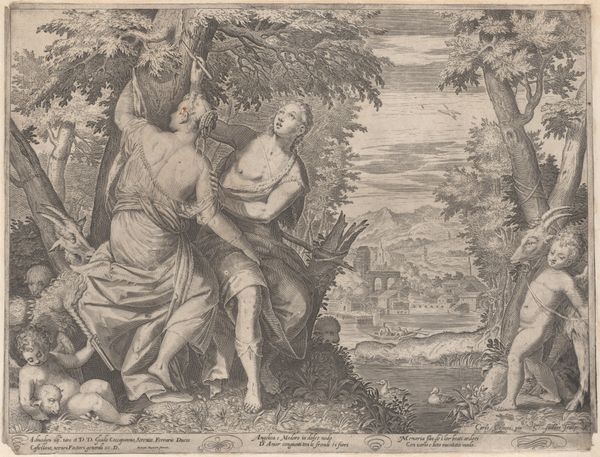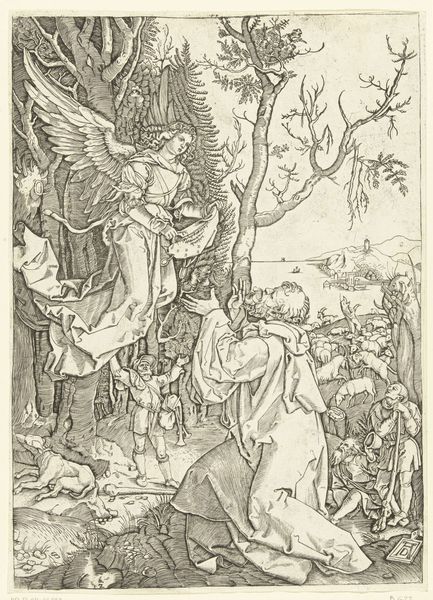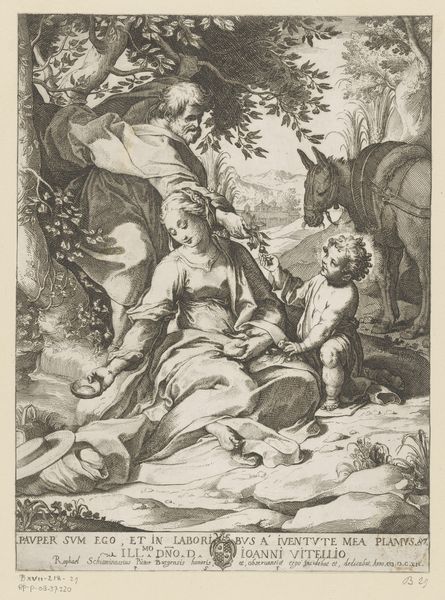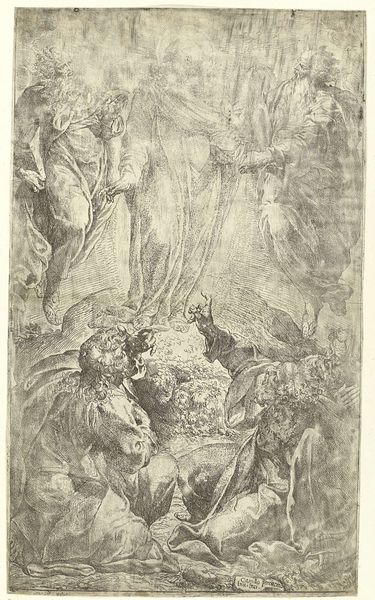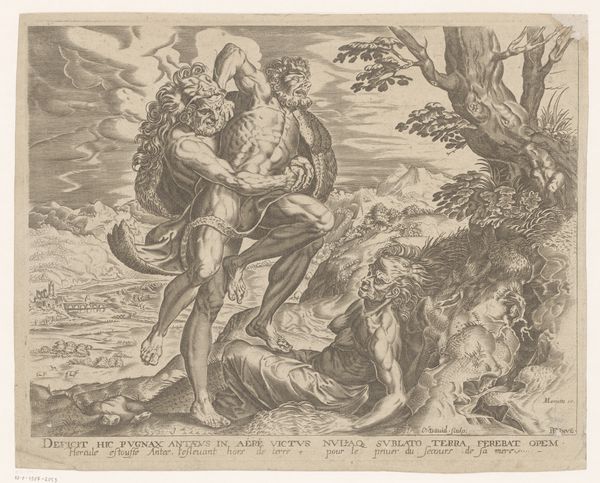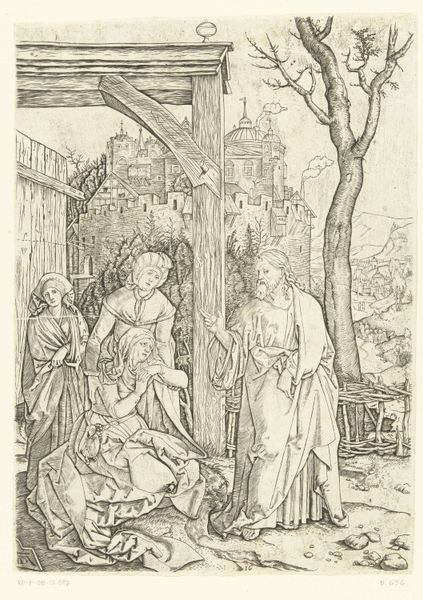
print, engraving
# print
#
landscape
#
figuration
#
11_renaissance
#
history-painting
#
engraving
Dimensions: height 204 mm, width 238 mm
Copyright: Rijks Museum: Open Domain
Curator: This print by Willem Thibaut, made in 1563, is titled “Hagar geeft Ismaël te drinken”—Hagar Giving Water to Ishmael. Editor: There's a wonderful sense of pastoral melancholy here, even in the tight, controlled lines of the engraving. The stark contrast of light and shadow directs the viewer's eye toward the pair. Curator: Indeed. Thibaut masterfully employs line variation to create depth and texture. Notice the dense hatching in the shadows around the fountain compared to the more delicate lines defining Hagar's garments. Editor: That elaborate fountain really grabs the attention. It's almost an altar of sorts with lion heads spewing water into the basin, recalling similar fountains in mythological images. It infuses the scene with cultural history beyond just a mother giving her son refreshment. Curator: Absolutely, the fountain acts as a pivotal visual element, providing spatial grounding but also adding layers of complexity. Its ornate, almost grotesque character jars with the tenderness of the figuration and emphasizes the formal, pictorial elements of the artwork as a designed object, beyond mere story telling. Editor: The scene, of course, portrays a specific story from the Bible; Hagar and her son Ishmael are banished to the desert, a powerful illustration of displacement, and reliance. Water, an eternal symbol of life, makes the pair representative of endurance. Curator: We could even examine the tree, centrally placed and in many respects the heart of the scene: how might the tree’s bifurcated nature mirror the composition itself, cleaved in two by competing themes of salvation and damnation, prosperity and expulsion? Editor: Ultimately, that’s it: A very well-defined and structured artwork becomes representative of something beyond its simple components. The symbology of the fountain, figures, landscape—it allows one to see historical suffering reflected on an intimate scale. Curator: This small yet formally rigorous print really showcases how printmaking can imbue narratives, even familiar ones, with complex emotions using a very controlled visual grammar. Editor: Yes, the combined layers of emotional and cultural iconography allow this tiny rendering of such dire events to stand out in stark emotional resonance.
Comments
No comments
Be the first to comment and join the conversation on the ultimate creative platform.
